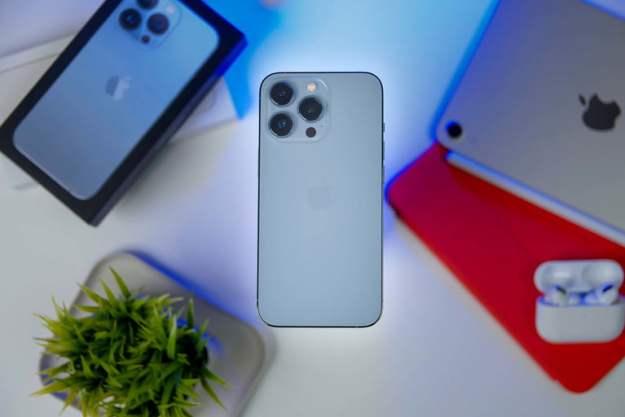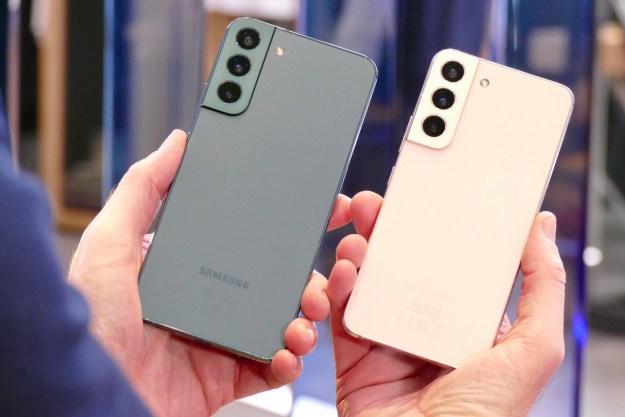Update: Refreshed article for 2017 to reflect that 4G is now commonplace and 5G is on the way.
The fourth generation of cellular technology, or 4G, has been around for some time now — in fact, we’re now hearing a lot about the initial stages of 5G. Despite that, however, 4G is likely to remain a major part of how you access the internet from your smartphone for the foreseeable future. Unfortunately, sometimes technologies like this — with their dozens of associated buzzwords — can be a little difficult to understand. Is it all a bunch of marketing nonsense or are these words you should know and understand? We’ve got the scoop in our official mobile broadband FAQ.
Read on to learn what 4G is, why you should want it, and what all this means for the future of wireless.
The basics of 4G
What is 4G?
Don’t let this surprisingly intuitive naming scheme spin you around: 4G simply means “fourth generation.” It’s the next step up in mobile internet speed from 3G, which is a term you started hearing in the early 2000s. When you browse the web in some rural areas and when 4G isn’t available, you’ll be on 3G. It uses the networks built by wireless carriers and transfers data over them at speeds up to 2 megabits per second (Mbps), making it possible to load a website and stream videos… just not very fast. That changed with 4G networks, which offer download speeds comparable to, if not faster than, the broadband internet you get on your laptop at home — all over the airwaves.
At launch, 4G networks offered speeds of around 1Mbps to 12Mbps, which was pretty fast for the time. Now, however, speeds are hitting closer to 100Mbps, while some 4G networks are even boasting speeds of a whopping 1Gbps, or 1,000Mbps. That’s probably a whole lot faster than even your home Wi-Fi network. If you want to know the speed of your Wi-Fi network, you can test it here.
Do I have a 4G-capable phone?
You most likely have a 4G-capable phone, if you bought it within the past 5 years or so. Even budget phones these days support 4G, and while they may not offer modems that reach massive 1Gbps speeds, they should still offer much faster speeds than anything you experienced on 3G or before that.
Does my wireless carrier offer 4G?
All four major carriers — AT&T, Verizon, Sprint, T-Mobile — offer super fast 4G speeds, but actual speeds vary widely both depending on the carrier and depending on your connection. On top of those four carriers, most smaller carriers offer 4G connections of their own, including MNVOs that piggyback on the networks of the “big four.” The big networks are also spending billions of dollars to both improve their 4G networks, and to begin offering 5G.
Check out our guides for the major four carriers’ family plans here.
What is the ITU?
The ITU, or International Telecommunications Union, is an agency of the United Nations that sets telecommunication standards for the world. The ITU coined the terms 3G and 4G and establishes which technologies meet the requirements to qualify for the labels. Initially, the ITU claimed that HSPA+ technology didn’t qualify as 4G, but reversed its decision in December 2010.
The flavors of 4G
What is WiMax?
WiMax stands for “Worldwide Interoperability for Microwave Access.” It is an ITU-approved, fourth-generation mobile broadband technology that attempts to mimic the abilities of Wi-Fi wireless internet, but over a mobile phone network using an open protocol (802.16m). Think of it as a patchwork of Wi-Fi hotspots that, instead of reaching for a few hundred feet, can stretch for miles and overlap, eliminating coverage gaps. It provides fixed and mobile internet access for compatible devices with less interference than traditional Wi-Fi. Theoretically, a WiMax tower could provide broadband wireless internet over a 30-mile range, though most stations currently achieve much less. Current WiMax users can realistically expect about 3Mbps to 6Mbps download speeds.
What is LTE?
LTE stands for “Long Term Evolution,” and is an ITU-approved 4G mobile broadband technology. It is a direct competitor to WiMax. LTE is more of a successor to current mobile 3G standards than WiMax. However, instead of transmitting data using microwaves, LTE uses radio waves. Theoretically it can attain speeds up to 1Gbps, though real-world speeds are generally far slower than that. LTE was developed as a long-term alternative to DSL, cable, and other wired forms of internet.
All major networks in the U.S. currently offer LTE connections.
What’s the difference between LTE and WiMax?
WiMax is based on IEEE (Institute of Electrical and Electronics Engineers) standards, meaning it uses an open protocol that has been debated and approved by a large community of engineers. LTE, on the other hand, is a standard that was cooked up by the 3GPP (Third Generation Partnership Project), which is an organization consisting of wireless agencies and telecommunications companies. The 3GPP organization came up with 3G standard for GSM some years back, which was adopted by a majority of wireless carriers around the world (except here in the U.S. where Verizon and Sprint chose to use CDMA).
However, LTE and WiMax aren’t enemies like CDMA and GSM have been. Both technologies use OFDM (Orthogonal frequency-division multiplexing), which means that unlike competing 3G networks like CDMA and GSM, WiMax and LTE are more like siblings. They aren’t entirely incompatible, so it’s easier and cheaper to design devices that incorporate both technologies.
Similarities: Both use SIM cards, both are backward compatible with existing CDMA and GSM networks, both use OFDM and MIMO (Multiple In, Multiple Out), both have similar speeds, and both are IP-based.
What about LTE Advanced?
LTE Advanced is the latest and greatest incarnation of 4G technology, and it’s widely regarded as a stepping stone towards 5G. It’s often abbreviated to LTE-A, and uses what’s called “carrier aggregation” to work properly. To understand carrier aggregation, you have to understand that phones download data through radio waves, which exist in different frequencies. 4G exists across multiple different frequency bands, and that’s where LTE-A comes in. Instead of connecting on one frequency band, LTE-A downloads data through multiple frequency bands.
Okay, then what is HSPA+?
HSPA+ stands for “Evolved High-Speed Packet Access.” It has been touted by some carriers as a 4G mobile broadband network type, and the ITU recently changed its 4G definition to put HPSA+ under the 4G umbrella, but really, it is merely an upgrade to existing 3G GSM technologies. Think of it as a stopgap or bridge between 3G and 4G. Though it offers download speeds that can theoretically reach 84Mbps (possibly even higher), it is not a next-generation network. It still uses the old interface and standards implemented years ago for 3G, and lacks the response time of LTE and WiMax. It’s like comparing a Formula 1 race car to a souped-up Toyota Camry; the Camry may move fast, but it wasn’t designed to race. HSPA+ is the definition of an old dog that has learned new tricks. LTE has a lot of small back-end improvements to its core technology that better suit it for the future, but many carriers may stick with HSPA+ for a couple years due to the savings. HSPA+ networks will likely feature download speeds from 1Mbps to 7Mbps at first, though performance may vary wildly.
T-Mobile has been a big proponent of HSPA+, touting itself as “America’s largest 4G network.” More on that below. Since it is relatively cheap and speedy to upgrade a GSM network to HSPA+, both T-Mobile and AT&T have implemented HSPA+ in a large number of major markets and are quickly rolling the service out across the country. AT&T is also developing a next-generation LTE network.
So what’s next?
Contrary to popular belief, 4G is unlikely to be totally replaced by 5G at any point in the near future. Most suggest that instead 4G and 5G will work together to offer a seamless experience. That’s because of the fact that
In any case, carriers will continue to invest in 4G in the near future, and will be rolling out LTE-A as part of that investment — so your internet connection will likely get a whole lot better over the next few years.
Editors' Recommendations
- LTE vs. 4G: The differences explained
- Mobvoi’s connected Ticwatch Pro 4G LTE takes on Apple and Samsung in the U.K.
- Mobvoi’s new TicWatch Pro 4G/LTE smartwatch lasts 2 to 30 days with a catch


